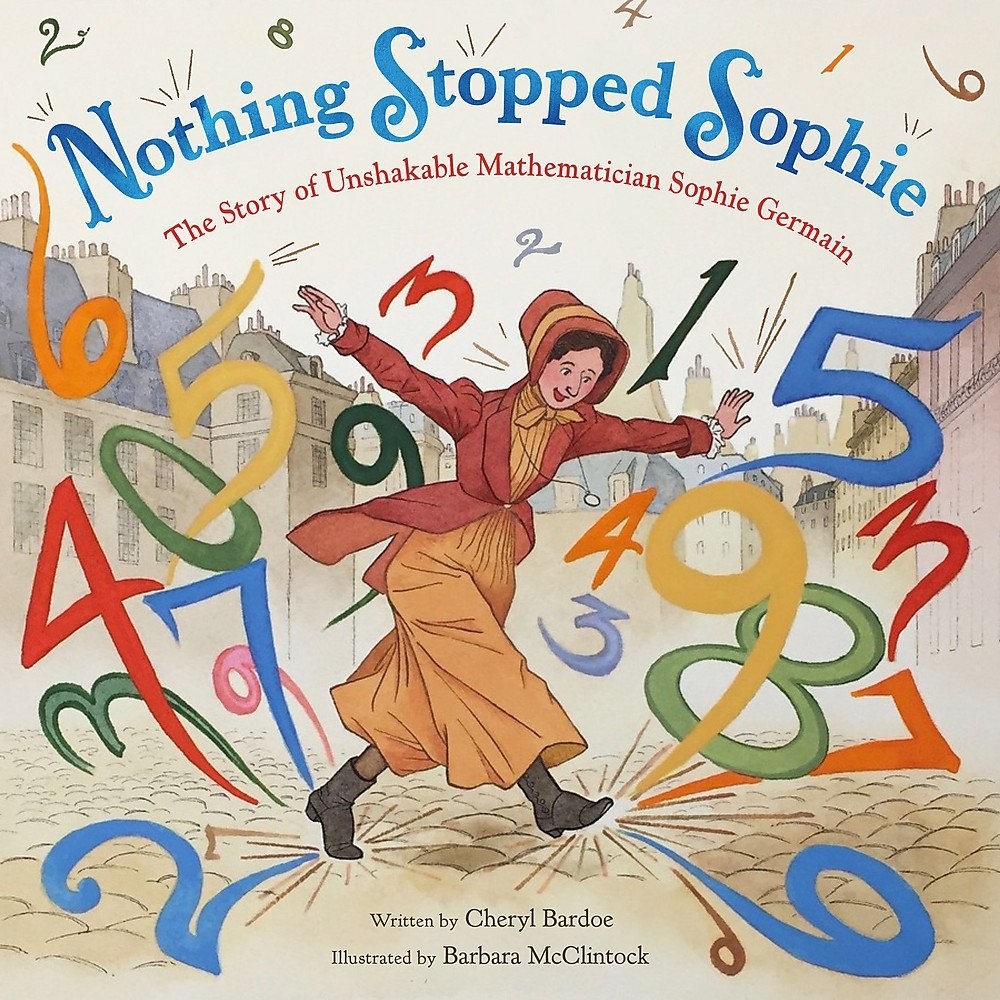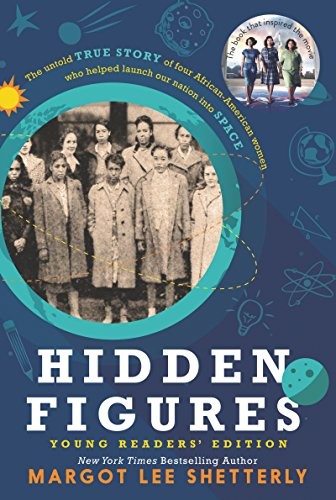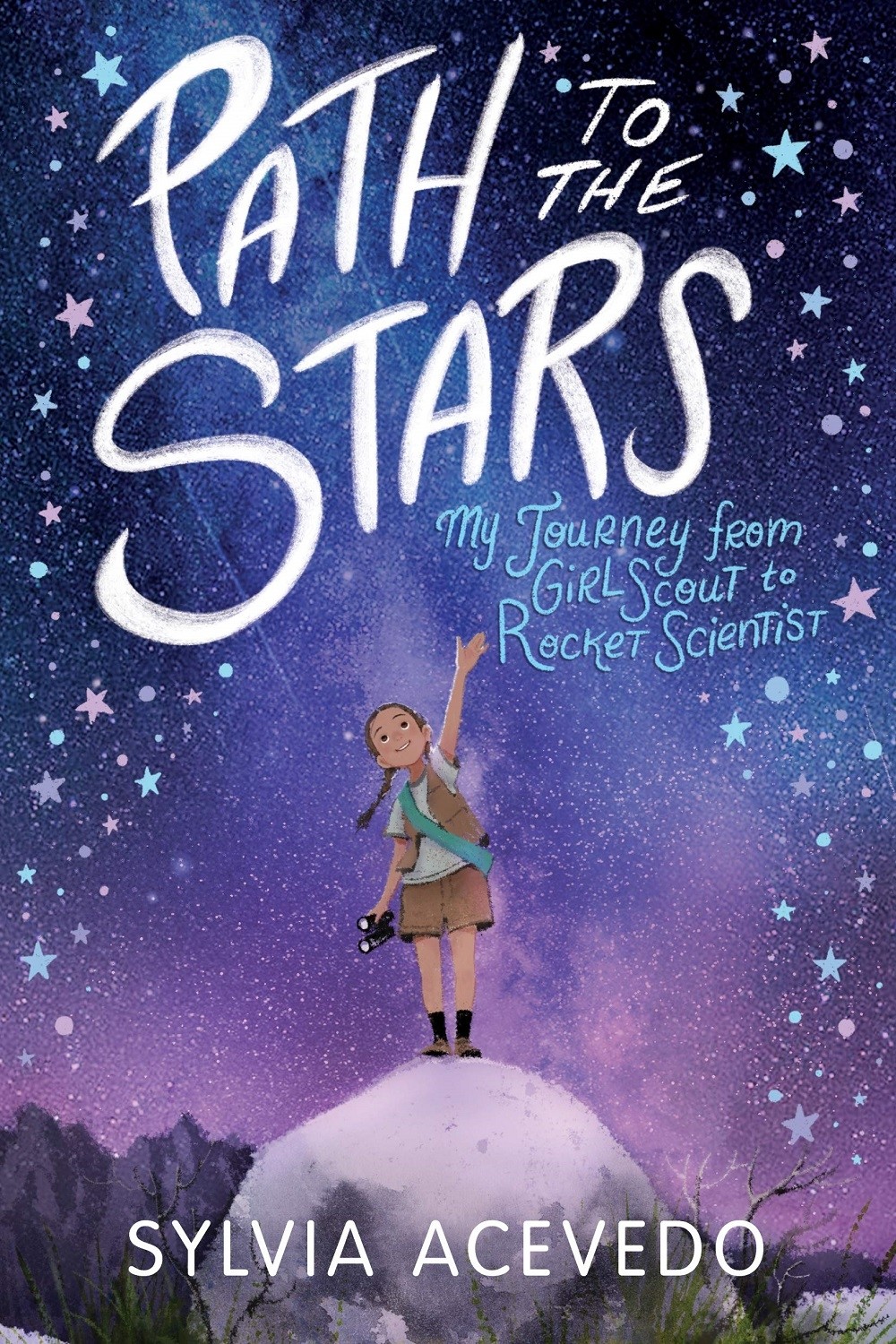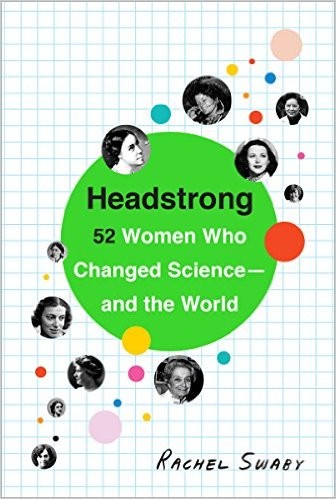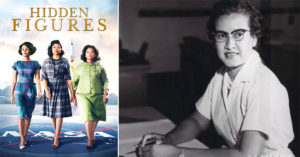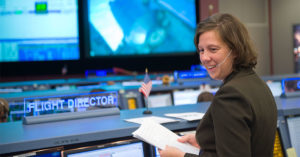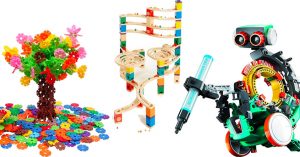This trailblazing engineer became the first person in history to design a Naval ship using a computer.
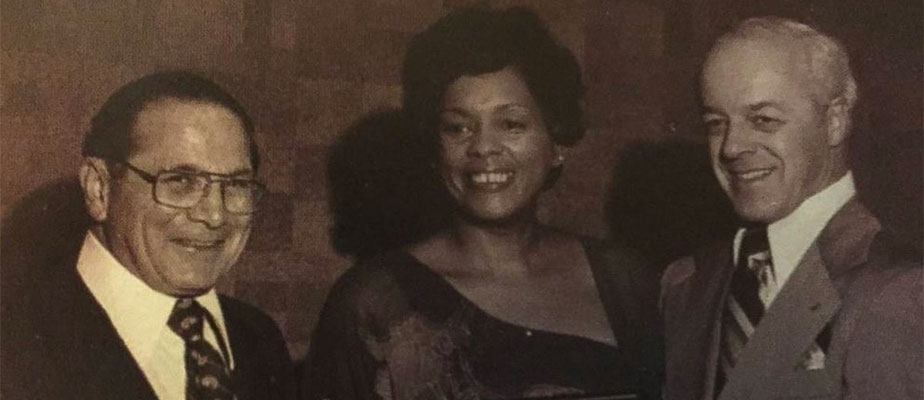 Raye Montague, the groundbreaking engineer and ship designer, smashed both gender and racial barriers to revolutionize Naval ship design and become the U.S. Navy's first female program manager of ships. While Montague was the first person to ever design a ship on a computer, her contributions were little known until Margot Lee Shetterly's book Hidden Figures, which told the story of African American female mathematicians at NASA, generated a new interest in other little-known women who made remarkable contributions with their technical prowess. Montague, who died in late 2018 and whose story has been told in the picture book, The Girl With A Mind For Math, always credited her mother's insistence on education for giving her the push she needed to reach for her dreams. "You’ll have three strikes against you," she remembered her saying. "You’re female, you’re black and you’ll have a Southern segregated school education. But you can be or do anything you want, provided you’re educated."
Raye Montague, the groundbreaking engineer and ship designer, smashed both gender and racial barriers to revolutionize Naval ship design and become the U.S. Navy's first female program manager of ships. While Montague was the first person to ever design a ship on a computer, her contributions were little known until Margot Lee Shetterly's book Hidden Figures, which told the story of African American female mathematicians at NASA, generated a new interest in other little-known women who made remarkable contributions with their technical prowess. Montague, who died in late 2018 and whose story has been told in the picture book, The Girl With A Mind For Math, always credited her mother's insistence on education for giving her the push she needed to reach for her dreams. "You’ll have three strikes against you," she remembered her saying. "You’re female, you’re black and you’ll have a Southern segregated school education. But you can be or do anything you want, provided you’re educated."
Montague was born on January 21, 1935 in Arkansas, and the gifted girl, who excelled at math and science, set her sights on her future career early: when her grandfather took the 7-year-old Montague to see a captured German submarine during WWII, she was fascinated by how it worked. "I looked through the periscope and saw all these dials and mechanisms. And I said to the guy, 'What do you have to know to do this?'" she recalled later. "He said, 'Oh, you’d have to be an engineer, but you don’t have to worry about that.'" For a while, it seemed that he was right: when she graduated high school, she wasn't permitted to study engineering at the University of Arkansas because the engineering program didn't admit black students. Instead, she completed a degree in business and moved to Washington D.C. in 1956 to become a typist for the Navy. She continued to pursue her dream of becoming an engineer by taking night classes in computer programming and engineering.
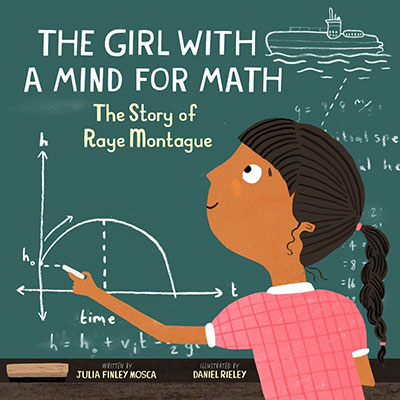 Montague's job with the Navy seated her next to the department's UNIVAC I computer, where she learned how it worked by watching the male Ivy League graduates running the computer. At first, as she later recounted, Montague wasn't allowed to use the computer "because 'we' weren't supposed to touch that computer right? And because I was from Arkansas." One day when the engineers were all out sick, however, she proved that she was up for the challenge by running the machine by herself. Her boss grudgingly agreed to give her a promotion to work on engineering projects — if she worked the night shift. But there was no public transportation at night, and Montague couldn't drive. So she bought a 1949 Pontiac, taught herself how to drive, and worked nights until she got the promotion. Soon, she was appointed a computer systems analyst, and she continued to excel, despite many obstacles along the way.
Montague's job with the Navy seated her next to the department's UNIVAC I computer, where she learned how it worked by watching the male Ivy League graduates running the computer. At first, as she later recounted, Montague wasn't allowed to use the computer "because 'we' weren't supposed to touch that computer right? And because I was from Arkansas." One day when the engineers were all out sick, however, she proved that she was up for the challenge by running the machine by herself. Her boss grudgingly agreed to give her a promotion to work on engineering projects — if she worked the night shift. But there was no public transportation at night, and Montague couldn't drive. So she bought a 1949 Pontiac, taught herself how to drive, and worked nights until she got the promotion. Soon, she was appointed a computer systems analyst, and she continued to excel, despite many obstacles along the way.
The real test of Montague's mettle came in 1971 when she was given the daunting task of figuring out how to design a Naval ship using a computer — her boss didn't mention that his department had been unsuccessfully trying to accomplish this task for years. She ended up having to tear down the Navy's computer and rebuild it but, after months of work, she figured out how to create computer-generated ship designs.
After she proved it was possible, the admiralty asked her to create a rough draft for an actual ship. It normally took two years to produce a design of a ship on paper; they gave her a month and she finished the design in 18 hours and 56 minutes. In honor of her breakthrough in the ship design process, Montague was awarded the Navy’s Meritorious Civilian Service Award in 1972.
Montague continued to climb the Navy's civilian ladder, becoming the program director for the Naval Sea Systems Command (NAVSEA) Integrated Design, Manufacturing, and Maintenance Program, the division head for the Computer-Aided Design and Computer-Aided Manufacturing (CAD/CAM) Program, and deputy program manager of the Navy's Information Systems Improvement Program. She eventually earned the civilian equivalent rank of captain.
When Montague retired in 1990, her contributions were largely forgotten, but with the success of Hidden Figures, her name emerged as another example of an African American woman in technology whose work was critical to her country's success. She has since been recognized by the Navy and inducted into the Arkansas Women's Hall of Fame. She used her fame to tell people her story and urge them to persevere in their dreams: "Don’t let people control you, you control the situation," Montague said in an interview in 2018. "Change obstacles into challenges. You might have to step back and go a different direction, but you can achieve."
Books About Little-Known Women in Programming & Math
Grace Hopper: Queen of Computer Code
Grace Hopper: Queen of Computer Code
Grace Hopper was a software tester, a creative inventor, and a top-notch mentor — but she was also a famous rule-breaker, risk-taker, and sometimes a real trouble-maker! In this riveting picture book biography of the woman nicknamed "Amazing Grace," author Laurie Wallmark captures the determination and cleverness of the woman who invented the COBOL computer language, allowing people to "talk" to computers with typed commands. Fun anecdotes — like the time she found a literal bug in the computer — provide a glimpse into the extraordinary life of this accomplished woman, who knew that quick thinking and insatiable curiosity were the key to pushing a (sometimes reluctant) world forward.
Counting on Katherine: How Katherine Johnson Saved Apollo 13
Counting on Katherine: How Katherine Johnson Saved Apollo 13
Katherine Johnson loved to count, and despite the prejudices against both women and African Americans, she was determined to find a way to make her love of math into a career. As one of NASA's "human computers," Johnson hand calculated elaborate equations... including the trajectories that helped launch the Apollo 13 mission to the moon. When disaster befell the Apollo 13 mission, it was Johnson's flight-path calculations that brought the astronauts safely home. This inspiring biography of the mathematician catapulted to fame by Hidden Figures celebrates a love of math and encourages kids to follow their passions. For another picture book about Johnson and her colleagues, check out Hidden Figures: The True Story of Four Black Women and the Space Race.
The Girl With A Mind For Math: The Story of Raye Montague
The Girl With A Mind For Math: The Story of Raye Montague
As a 7-year-old during WWII, Raye Montague toured a captured German submarine and immediately set her sights on becoming an engineer. Little did she know that sexism and racism would challenge her dream every step of the way. Raye ended up working at the US Navy as a typist, studying engineering at night. One day, when all the engineers were sick with the flu, she astonished everyone by completing all of their work. She went on to become the first person to design a ship on a computer and the Navy's first female ship designer. This inspiring picture book from the Amazing Scientists series celebrates a pioneer who changed ship design forever.
Margaret and the Moon: How Margaret Hamilton Saved the First Lunar Landing
Margaret and the Moon: How Margaret Hamilton Saved the First Lunar Landing
Margaret Hamilton loved numbers, and to her, the best part of math was when it could solve a problem in the real world! Her love of math introduced her to computers, and then to a job at NASA, where they were planning a mission to the moon — and computers were going to be a part of it. Hamilton hand-wrote the code for the Apollo missions, and when a last-minute problem cropped up as Apollo 11 prepared for a lunar landing, it was Hamilton's forward-thinking code that saved the day! This fascinating and fun picture book biography of a computing pioneer — the woman who coined the term software engineer — beautifully depicts the spirit of curiosity and determination that drove Hamilton to success.
Nothing Stopped Sophie
The Story of Unshakable Mathematician Sophie Germain
Nothing Stopped Sophie
The Story of Unshakable Mathematician Sophie Germain
People in the 18th century thought learning math could hurt a woman's health, so when Sophie Germain was a child, her parents even took away her candles at night so she couldn't see to study. However, she was determined to follow her dreams, and spent six years working to prove a math problem that male scholars had declared unsolvable. When she developed an equation that could predict patterns of vibrations — which laid the groundwork for much of modern architecture — she became the first woman to win a grand prize from France's Academy of Sciences. This exuberant picture book biography captures the triumphant life of a pioneering and under-recognized mathematician.
You Should Meet: Katherine Johnson
You Should Meet: Katherine Johnson
She's been called one of the greatest American minds of all time, and when NASA first started using computers to calculate launch trajectories, they only trusted them after she double-checked the math! Katherine Johnson broke both gender and racial boundaries when she started working for NASA in the 1950s as a human computer, performing the complex calculations necessary to launch rockets, satellites, and eventually, the Apollo 11 moon mission. New chapter book readers who are fans of the hit movie Hidden Figures will be excited to read their very own book about Johnson from Ready to Read's You Should Meet series. Older readers can check out Hidden Figures Young Readers Edition for ages 8 to 13.
Hidden Figures Young Readers' Edition
Hidden Figures Young Readers' Edition
Before people could orbit the Earth or fly to the moon, there was a group of "human computers": dedicated female mathematician who used pencil and slide rule to calculate how to launch rockets. Four African-American women, Dorothy Vaughan, Mary Jackson, Katherine Johnson, and Christine Darden, were critical to the story of space flight — and yet their story was largely untold. In this young readers edition of Hidden Figures: The American Dream and the Untold Story of the Black Women Mathematicians Who Helped Win the Space Race, tweens will learn how these women, so little appreciated in their time, changed both NASA and America for the better. Younger readers can check out the picture book Hidden Figures: The True Story of Four Black Women and the Space Race for ages 5 to 9.
Path to the Stars: My Journey from Girl Scout to Rocket Scientist
Path to the Stars: My Journey from Girl Scout to Rocket Scientist
As a child in a Mexican-American community, everyone expected that Sylvia Acevedo would grow up to marry and stay at home with her children — but Sylvia yearned for adventure. Then she joined the Brownies and her life was transformed. Through the Girl Scouts, she found peers who shared her love of science and role models that fostered her confidence and independence. Acevedo would become a rocket scientist for NASA — and today, she's the CEO of the Girl Scouts, helping other girls follow their dreams. This inspiring memoir is a celebration of resilience and a testament to the transformative impact of the Girl Scouts on many girls' lives.
Headstrong: 52 Women Who Changed Science – And The World
Headstrong: 52 Women Who Changed Science – And The World
Learn the often neglected stories of women in science with these 52 engaging capsule biographies! Spanning centuries of courageous thinkers, author Rachel Swaby celebrates women whose specializations range from biology to physics to engineering to programming, from famous names like Sally Ride and Ada Lovelace to lesser-known women like Stephanie Kwolek and Chien-Shiung Wu. While each individual's biography runs for only a few pages, Swaby has done an impressive job of conveying the essence of each scientist's life and work into the profiles, while her light tone urges readers to learn more about each of these groundbreaking women.
Overnight Code: The Life of Raye Montague, the Woman Who Revolutionized Naval Engineering
Overnight Code: The Life of Raye Montague, the Woman Who Revolutionized Naval Engineering
When 7-year-old Raye Montague saw a captured Germans submarine during World War II, she wanted to learn how it worked — but everyone told her an African American woman couldn't be an engineer. She started out as a typist for the Navy, but she was determined to achieve her dream, so she took night classes in engineering and in early computer programming. She not only proved her ability and became a Navy engineer, but when someone challenged her to figure out how to design a ship on a computer, she did it: instead of the usual two years, her rough draft for a ship design took 18 hours and 56 minutes. This true story about a woman who overcame prejudice to achieve her dream is an empowering reflection on the power of education.













